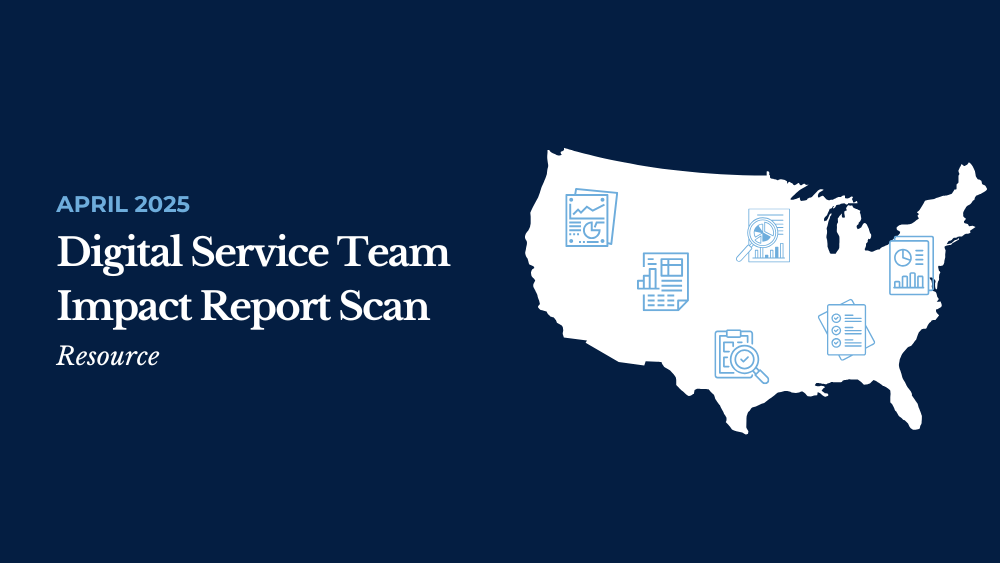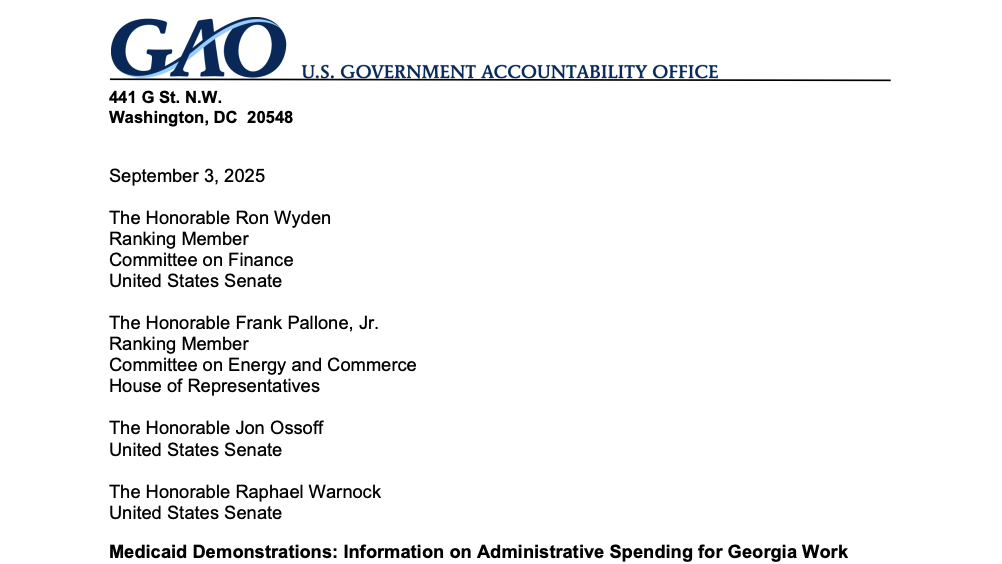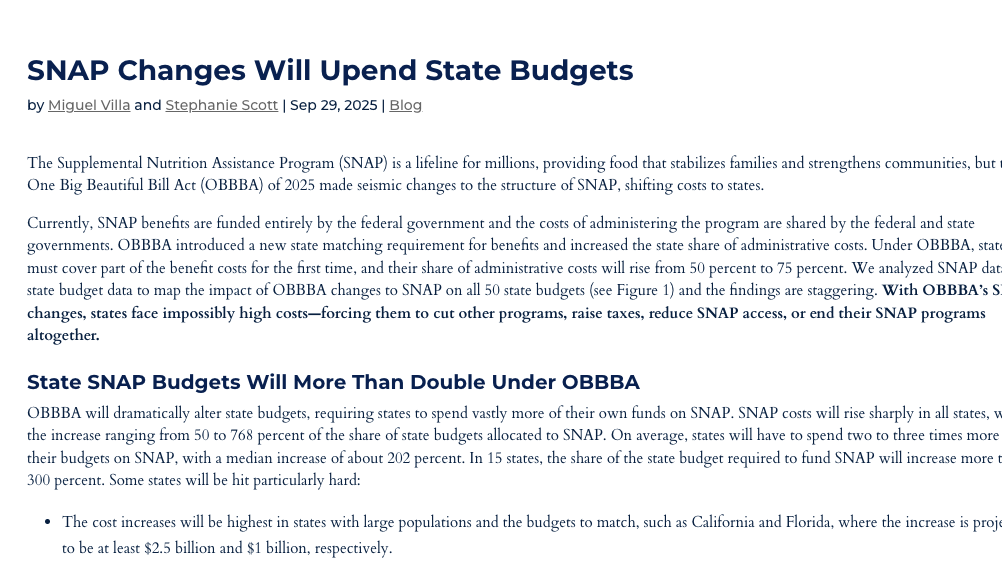Impact Reporting by Government Digital Service Teams
A comprehensive analysis of how government digital service teams document and communicate their impact across federal, state, and local levels. This report aims to identify key reporting trends and practices to help teams develop impact narratives that demonstrate their value to stakeholders.

Tracking Government Digital Service Impact Reporting
Government digital service teams (DSTs) play a vital role in modernizing public services, improving accessibility, and fostering trust in government. As these teams have expanded across federal, state, and local levels, understanding how they communicate their impact is essential. Unlike traditional government functions, digital service is a newer field where teams are still refining how to document and share their successes. Rather than a one-size-fits-all approach, there is an opportunity for teams to learn from diverse reporting methods and build upon each other’s communication strategies.
Drawing from the Government Digital Service Team Tracker, this initiative examines how DSTs structure their impact reporting, what information they share, and which emerging practices offer promising models for other governments to replicate. By centralizing these insights into a living tracker that will be updated as new impact reports are shared and made available—and adding the impact reports to the Digital Government Hub—we aim to help teams articulate their value by building off of the approaches from other teams to help communicate to agency leaders, policymakers, or the general public.
Our research addresses four key questions:
- Which digital service teams publish impact reports?
- What common features appear across these reports?
- How do impact reports differ across city, county, state, and federal levels?
- What impact reporting trends and promising practices can digital service teams adopt to strengthen their communication about their impact?
By mapping the current landscape, this initiative provides a foundation for teams to develop their own impact reports—ensuring that digital transformation efforts are recognized, replicated, and continuously improved.
Definitions + Process
To understand how digital service teams communicate their impact, we first established a broad and inclusive definition of what constitutes an “impact report.” Rather than limiting our scope to traditional annual reports, we expanded our definition to include any structured documentation that demonstrates the value, outcomes, or progress of digital service initiatives. This includes performance reports, blog posts, dashboards, and other storytelling formats that teams use to share stories about and takeaways from their work.
Our investigation began with a fundamental question:
How do digital service teams across different levels of government document and communicate their impact to stakeholders?
Our investigation specifically focuses on impact reporting from DSTs. DSTs are in-house teams of digital practitioners with expertise in user-centered research and design, agile product management, and data-driven decision making who have a mandate to create, improve, or help other government actors improve public-facing online government experiences. For a complete definition of DSTs, please refer to the Government Digital Service Team Tracker.
We recognize there are other valuable reporting efforts from non-DST teams across government, such as the Office of Management and Budget’s (OMB) 2024 Impact Report, which provides broader insights into digital transformation initiatives.
There are also government departments that partner with DSTs and have featured the impact of their collaborative work in reports, such as Pennsylvania’s Office of Transportation and Opportunity Impact Report.
However, our research specifically examines how DSTs across different levels of government document and communicate their unique impact to stakeholders, exploring various reporting approaches from data-heavy assessments to narrative case studies.
Explore the Digital Service Impact Report Tracker
We developed a systematic approach to collect and analyze impact reporting practices by identifying active DSTs across federal, state, county, and city governments in the Government Digital Service Team Tracker and gathering their publicly available reports and documentation from 2021-2024.
We created the Digital Service Impact Report Tracker on Airtable documenting the common characteristics across impact reports.
The Airtable is a living database for those seeking to explore:
- reporting approaches and impact communication;
- practices across government levels and digital service trends; and
- key insights, gaps, and opportunities in reporting methods.
Key Insights
The Digital Service Impact Report Tracker currently includes 14 impact reports (6 federal, 7 state, 1 city, 0 county) showcasing diverse approaches to measuring digital service impact. We’ve highlighted the following trends and insights:
- Quantitative Metrics and Case Studies
- These remain the most commonly used reporting tactics; quantitative metrics appear in 13/14 reports (93%) and case studies appear in 12/14 reports (86%).
- These techniques are consistently used to provide concrete examples of digital transformation.
- Particularly prevalent in federal and state-level reporting.
- Example: U.S. Digital Service (USDS) 2024 Impact Report
- Testimonials
- Appear in 8 out of 14 reports (57%) and are frequently combined with case studies and quantitative metrics to articulate the impact of complex digital service projects
- Often used to illustrate citizen and staff experiences with digital services
- Example: Digital Service at Centers for Medicare and Medicaid Services (DSAC) – 988 Suicide and Crisis Lifeline
- Publication Frequency
- Annual reporting frequency is most common (12/14 or 86%), with some reports published on a continuous update basis (6/14 or 43%) or quarterly (3/14 or 21%)
- PDFs are common (8/14 or 57%), but blog posts (6/14 or 43%) and online platforms/interactive dashboards (4/14 or 29%) are also frequently used.
- Government or DST website is the universal publication venue (14/14 or 100%).
- Example: Minnesota IT Services Q2 2024 Quarterly Report
Across federal, state, and city governments, our research reveals that DSTs predominantly rely on quantitative metrics and case studies to demonstrate impact, while incorporating human-centered narratives to contextualize their work.
The universal adoption of websites alongside additional information-sharing through diverse publication channels like social media or newsletters, particularly at the state level, demonstrates an evolving communication landscape as these teams mature in their critical mission of transforming public services.
Capture Your Team’s Impact Report in the Digital Service Impact Report Tracker
Transparent reporting on digital service delivery has become the expectation and is a critical aspect of how DSTs publicly share about their efforts to improve service delivery.
Although many DSTs are just beginning to communicate their impact, our research reveals they are evolving their approach through data-driven analysis and compelling narratives across diverse publication channels.
The Digital Service Impact Report Tracker documents these reporting strategies to reduce barriers for teams seeking to demonstrate their value. If your team has published an impact report or discovered noteworthy examples, please submit them through our Airtable Form to strengthen how we collectively communicate digital transformation’s value in government service delivery.


